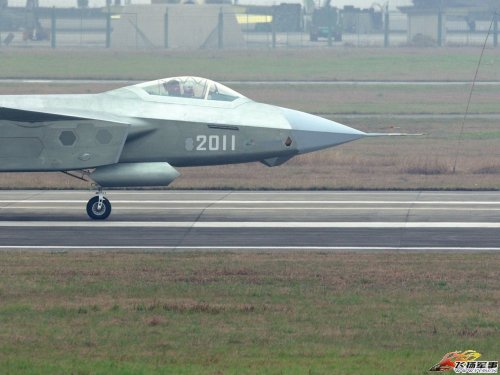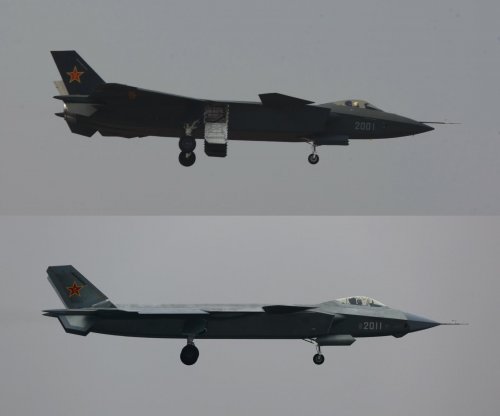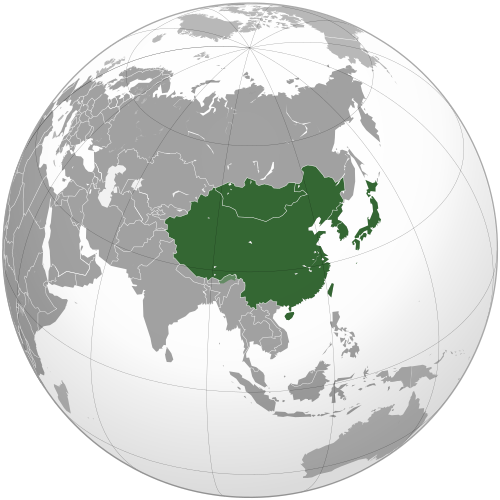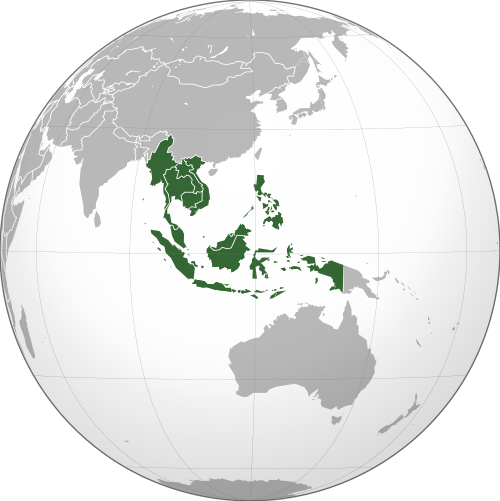VH said:
At the very least I look at the many problems the United States encountered on their long road to developing the F-22, B2, and the F-35. Then I look at the technological society America is. In contrast I look at China which is trying to leap, a 'great leap forward' if you will excuse the pun, from manufacturing copies of Russian fighters to a world class 5th generation fighter complete with Chinese made engines and more importantly Chinese made combat systems and I just say that there are things that they have overlooked or at least not mastered fully in the quest for this world beater aircraft. Its just human nature.
I suppose we'll have to see.
Sure, the US has encountered many difficulties in developing recent aircraft -- hell they encountered many difficulties in most of their recent military projects across the board. But whether that is technology related or management related (or indeed, related to politics), is another matter entirely.
Then you factor in the speed of trying master these complex subjects so that China can best the United States and you know that there are hidden problems just lurking ready to bite Chinese technology in the ass.
But that applies to everyone, and the US as well.
I contend that these problems will have to be solved before China can claim the prize as top dog. Its just human nature. Meanwhile America will continue to lead because they have put the hard work in to be top dog. There are no short cuts.
Well I never said about China wanting to be "top dog" -- my argument was deliberately open ended and applied only to when the 6th generation fighters of the future may appear.
And you're being awfully pretentious by saying America has "put the hard work in" -- as if no one else has? I'm not saying China will overtake the US and come out with a 6th generation fighter earlier than the US, only that the difference in time between when the US and Chinese reveal their 6th generation fighters may be a lot shorter than the two decades between when F-22 and J-20 were revealed.
You cant' cut corners on technology and science, but you can "cut corners" in the sense of reducing time needed to complete a project (or develop a technology), if you manage your programme well and if you divorce politics from important military projects.
Maybe they don't advertise because its not happening. Maybe China is trying to project a certain image, a bigger image, to deter others from moving on them. Maybe they are operating under the idea of perception being reality.
I'm not sure how new you are to PLA or indeed, China watching, but it is basically PLA doctrine to deliberately understate their capability and to not reveal their R&D (although sometimes we get inadvertant leaks).
They didn't officially declassify J-10 until about 2006. By your logic, J-10 didn't exist before 2006... They still haven't declassified J-20. I suppose J-20 doesn't exist either.
Stand in China's position at the moment, think, that if they did reveal all of their military development and R&D and projects, what woudl that do? Would it scare its adversaries from moving against Chinese interests or will it galvanise them into developing their counters?
At this point, Chinese military technology and the Chinese economy isn't at the point where they can steamroll adversaries in an arms race of technology. That's why they seek to constantly under report their development and keep a lid over their projects. Otherwise, if the US knew China was developing X, Y or Z, then the US would have ample warning to develop policies or weapons to coutner them. More importantly, the US still has a larger economy and a technological lead, and if it was applied, it may be able to achieve a more decisive operational in service military technological superiority in the near term, which would be detrimental to China's interests. It is instead better for china to grow its economy and technological base while simultaneously trying to match/counter the US in operational assets as competently as possible, until such a time where its economy and industry can allow china to have a more decisive superiority over the US (if or when this may happen, I do not know or speculate, I'm only stating their likely long term reasoning)
A perfect example is the J-20. the J-20 project started in the early 2000s. If China was as open as the US about its fighter programme, then the world would have known the J-20 was in development by the early/mid 2000s at latest. If the US knew that, then they'd never have shut down F-22 production, would they?
But instead, what did China do? They kept J-20 under wraps to most of the world's eye until 2001 literally took to the skies and rustled Mr Gates jimmies, and well after F-22 production ended.
So, reality is basically the reverse of what you said -- China is actually trying to project an image that its military development is behind where it actually is, so its opponents underestimate its assets.
You can see China's policy on revealing military development as the opposite of countries like North Korea or Iran. Those countries tout false achievements, fake models, and raucously hailing everything from small UAVs to a mediocre missiles, partly for nationalism, partly to scare adversaries by overemphasizing their capability.
They are paper tigers, whose roads are fiercer than their bite.
China OTOH, "reveals" its projects through third party online communities, and doesn't report on weapons development unless success is either imminent or highly assured. Nationalism is garnered rarely through official state reports, but mostly via official sanctioning of some leaks and photos delivered through he internet. This gives the PLA both pride and support from military enthusiasts, but also they can avoid giving too much information away which may scare the US or Japan or whomever into investing too much into their own weapon counters.
Well to my way of thinking the subject of modern air combat operates hand in glove with having a fully operational combat system that is ready to achieve air dominance. To that end the aircraft plays just a role.
Right, well we were talking about timelines of when both nations might reveal 6th generation fighters.
Trying to assess the "subject of modern air combat" and the PLAAF's "combat system" is far too big a topic to even consider discussing on an online forum.




